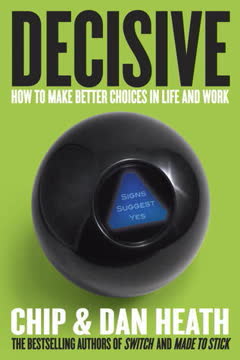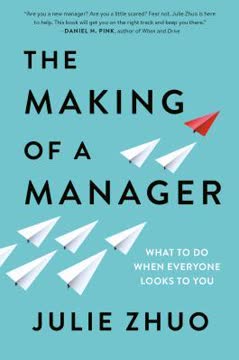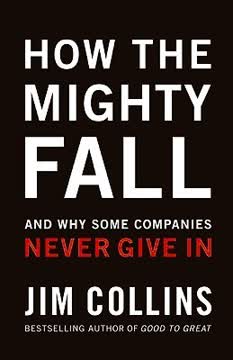Key Takeaways
1. Work smarter, not harder: Focus on value and targeted effort
To work smart means to maximize the value of your work by selecting a few activities and applying intense targeted effort.
Rethink productivity. Traditional notions of success often emphasize working longer hours and taking on more responsibilities. However, this "work harder" approach can lead to burnout and diminishing returns. Instead, top performers focus on maximizing the value of their work through selective engagement and concentrated effort.
Embrace the seven practices. Hansen's research identified seven key practices that distinguish top performers:
- Do less, then obsess
- Redesign work
- Don't just learn, loop
- Match passion with purpose
- Champion forcefully
- Fight and unite
- Collaborate disciplined
These practices, when combined, accounted for 66% of the variation in performance among the 5,000 people studied. By adopting these strategies, individuals can significantly improve their work performance without sacrificing personal well-being.
2. Do less, then obsess: Narrow your scope and excel
As few as you can, as many as you must.
Focus and excel. Top performers choose a limited number of priorities and channel immense effort into those areas. This approach allows them to produce exceptional results while avoiding the pitfalls of spreading themselves too thin or becoming entangled in unnecessary complexity.
Implement practical strategies:
- Apply Occam's razor: Eliminate unnecessary tasks, meetings, and responsibilities
- Tie yourself to the mast: Create rules and systems to resist distractions
- Learn to say "no": Manage expectations and decline non-essential commitments
- Obsess over quality: Once you've narrowed your focus, strive for excellence in your chosen areas
By mastering the art of doing less and obsessing, individuals can boost their performance ranking by up to 25 percentile points compared to those who don't embrace this practice.
3. Redesign your work to maximize value creation
Perfection is finally attained not when there is no longer anything to add, but when there is no longer anything to take away.
Create value, not just activity. Many people confuse busyness with productivity, focusing on completing tasks rather than generating meaningful outcomes. To truly excel, redesign your work to prioritize activities that create substantial value for others – be it your organization, colleagues, or customers.
Strategies for effective redesign:
- Hunt for pain points: Identify and solve persistent problems in your workplace
- Ask "stupid" questions: Challenge assumptions and seek innovative solutions
- Show, don't tell: Use vivid demonstrations to convey ideas and inspire change
- Measure impact, not just output: Focus on the benefits your work brings to others
Remember, small changes can yield significant results. Like Dr. Michael Bennick's simple adjustment to nighttime blood draws, which dramatically improved patient satisfaction scores, look for opportunities to make impactful improvements through thoughtful redesign.
4. Don't just learn, loop: Continuously improve through quality feedback
To work smart means to maximize the value of your work by selecting a few activities and applying intense targeted effort.
Embrace deliberate practice. While the "10,000-hour rule" popularized the idea that mastery requires extensive repetition, Hansen's research reveals that the quality of practice matters more than quantity. The learning loop – a workplace-adapted version of deliberate practice – involves trying new approaches, measuring outcomes, obtaining rapid feedback, and modifying behavior accordingly.
Key tactics for effective learning loops:
- Carve out 15 minutes daily for focused improvement
- Chunk complex skills into manageable micro-behaviors
- Measure "soft" skills through specific, observable actions
- Seek nimble, fast feedback from peers and mentors
- Embrace the performance dip that comes with trying new approaches
- Push beyond stall points by continually challenging yourself
By mastering the learning loop, individuals can significantly improve their performance, potentially moving from the 50th to the 75th percentile in their field.
5. Match passion with purpose for peak performance
Purpose asks, "What can I give the world?" Passion asks, "What can the world give me?"
Find the sweet spot. While following one's passion is often touted as the key to success, Hansen's research reveals that passion alone can be dangerous. Instead, top performers match their passion with a strong sense of purpose – contributing value to others or society. This "P-squared" approach leads to higher job satisfaction, reduced burnout, and improved performance.
Strategies to enhance passion and purpose:
- Expand your circle of passion: Explore various aspects of work that energize you (e.g., achievement, creativity, social interactions)
- Climb the purpose pyramid:
- Contribute value while doing no harm
- Craft personal meaning in your work
- Seek a strong social mission
- Hunt for new roles that align passion and purpose
- Keep passion in check to maintain work-life balance
Individuals who successfully match passion and purpose are likely to rank 18 percentile points higher in performance compared to those who lack either or both.
6. Champion forcefully: Inspire and influence with smart grit
People will forget what you said, people will forget what you did, but people will never forget how you made them feel.
Master the art of advocacy. In today's interconnected workplace, success often depends on gaining support from others. Forceful champions excel at inspiring colleagues and overcoming opposition through a combination of emotional appeal and strategic persistence.
Two key skills of forceful champions:
-
Inspire others by evoking emotions:
- Line up high-arousal emotions (e.g., make people upset about the present and excited about the future)
- Show, don't just tell (use vivid demonstrations)
- Connect daily work to a broader purpose
-
Apply smart grit to overcome obstacles:
- Empathize with opponents to understand their perspective
- Make strategic concessions when necessary
- Co-opt adversaries by inviting them to participate
- Mobilize allies to advocate on your behalf
Mastering these skills can boost an individual's performance ranking by up to 15 percentile points.
7. Fight and unite: Foster productive debate and team commitment
As few as you can, as many as you must.
Embrace constructive conflict. High-performing teams engage in rigorous debate to explore ideas and scrutinize assumptions. However, they also know how to unite behind decisions once they're made. This "fight and unite" approach leads to better outcomes and stronger team cohesion.
Strategies for effective fighting and uniting:
Fighting:
- Seek diversity, not just talent
- Create psychological safety for open discussion
- Encourage quiet members to speak up
- Ask non-leading questions to promote honest dialogue
Uniting:
- Ensure everyone has a voice in the decision-making process
- Commit to decisions, even when you disagree
- Confront "prima donnas" who undermine team unity
- Sharpen team goals to align efforts
By mastering the art of fighting and uniting, teams can make better decisions and implement them more effectively, leading to improved overall performance.
8. Collaborate disciplined: Select partnerships wisely for optimal results
The goal of collaboration isn't collaboration. It's better performance.
Avoid collaboration extremes. Many organizations struggle with either under-collaboration (working in silos) or over-collaboration (excessive meetings and partnerships). Disciplined collaboration involves carefully selecting high-value collaborative efforts and implementing them effectively.
Five rules for disciplined collaboration:
- Establish a compelling business case for each collaboration
- Craft a unifying goal that excites all participants
- Reward collaboration results, not just activities
- Commit full resources (time, skills, money) to chosen collaborations
- Tailor trust-building tactics to address specific partnership challenges
By practicing disciplined collaboration, individuals can improve their performance ranking by up to 14 percentile points. Interestingly, women in the study benefited twice as much as men from this practice.
9. Achieve work-life balance through smarter work practices
Being great at work means performing in your job, infusing your work with passion and a strong sense of purpose, and living well, too. How great is that?
Redefine success. Contrary to popular belief, top performers don't sacrifice their personal lives for career success. Instead, they achieve better work-life balance by working smarter, not harder. The seven practices not only improve job performance but also enhance overall well-being.
Key strategies for balancing work and life:
- Spend your time dividend wisely: Reinvest some time savings into work, but allocate the rest to personal life
- Keep passion in check: Don't let work enthusiasm consume your entire life
- Manage emotional turmoil: Learn to separate personal feelings from professional debates
By adopting these practices, individuals can achieve both exceptional performance at work and a fulfilling personal life. The study found that mastering the seven practices accounted for 29% of the variation in participants' work-related well-being, including improved work-life balance, reduced burnout, and higher job satisfaction.
Last updated:
FAQ
What's Great at Work about?
- Focus on Performance: Great at Work by Morten T. Hansen explores how individuals can achieve exceptional performance by working smarter, not harder.
- Seven Work Smart Practices: The book outlines seven specific practices that top performers use to maximize their output and effectiveness.
- Passion and Purpose: It emphasizes the importance of aligning passion with purpose to enhance motivation and performance.
Why should I read Great at Work?
- Evidence-Based Insights: The book is grounded in empirical research, providing scientifically validated strategies for improving work performance.
- Practical Framework: Hansen offers actionable advice and real-life examples that readers can apply to their daily work routines.
- Improved Work-Life Balance: By adopting the practices, readers can achieve better work-life balance and greater job satisfaction.
What are the key takeaways of Great at Work?
- Work Smart, Not Hard: The central theme is that working longer hours does not equate to better performance.
- Seven Practices for Success: The book identifies seven key practices, such as disciplined collaboration and rigorous teamwork.
- Passion and Purpose Matter: Matching passion with purpose is crucial for sustained motivation and performance.
What is the "Do Less, Then Obsess" principle in Great at Work?
- Focus on Priorities: This principle emphasizes selecting a few key priorities and dedicating intense effort to excel in those areas.
- Quality Over Quantity: By doing less, individuals can focus on producing higher quality work.
- Statistical Evidence: Hansen's research shows that this practice leads to significantly higher performance rankings.
How does Great at Work define "Redesign Your Work"?
- Creating Value: Redesigning work involves rethinking tasks to maximize value creation.
- Eliminating Waste: The practice encourages cutting out unnecessary tasks and streamlining processes.
- Real-World Examples: The book provides case studies illustrating how innovative redesign can lead to significant improvements.
What is the "Learning Loop" concept in Great at Work?
- Continuous Improvement: The learning loop is a method for ongoing skill development while performing daily tasks.
- Micro-Behaviors: It involves breaking down skills into manageable micro-behaviors for focused improvement.
- Enhanced Performance: Research indicates that individuals who engage in the learning loop significantly outperform others.
How does Great at Work address the importance of passion and purpose?
- P-Squared Concept: Hansen introduces matching passion with purpose as a key driver of performance.
- Broader Definition of Purpose: Purpose includes creating value for organizations, not just social contributions.
- Statistical Correlation: Those who achieve P-squared perform significantly better than those who lack either passion or purpose.
What are the seven work smart practices outlined in Great at Work?
- Do Less, Then Obsess: Focus on a few key priorities and dedicate intense effort to excel.
- Redesign Your Work: Rethink tasks to maximize value and eliminate waste.
- Don’t Just Learn, Loop: Engage in continuous learning through a structured feedback loop.
- P-Squared (Passion and Purpose): Match personal passion with a sense of purpose.
- Forceful Champions: Advocate for goals by inspiring others and applying smart grit.
- Fight and Unite: Encourage healthy debate in teams while fostering commitment.
- Disciplined Collaboration: Collaborate effectively by choosing the right projects.
How does Great at Work define disciplined collaboration?
- Balanced Approach: It balances the need for collaboration with the risks of over- and under-collaboration.
- Five Rules: Establish a compelling business case, craft a unifying goal, reward results, commit resources, and engineer trust.
- Avoiding Collaboration Pitfalls: Excessive collaboration can lead to inefficiencies and burnout.
How does Great at Work address the concept of fighting and uniting in teams?
- Constructive Conflict: Emphasizes the value of constructive conflict in team settings for better decision-making.
- Commitment to Decisions: Team members should unite behind the final decision after rigorous debate.
- Avoiding Groupthink: Encourages open dialogue and dissenting opinions to prevent poor decisions.
What are the best quotes from Great at Work and what do they mean?
- “Do less, then obsess.”: Focus on fewer tasks and dedicate intense effort for greater success.
- “The way to work smart is to maximize the value of your work.”: Encourages creating value through thoughtful work practices.
- “People will never forget how you made them feel.”: Highlights the importance of emotional connections in the workplace.
How can I apply the concepts from Great at Work in my own job?
- Identify Key Priorities: Determine which tasks are most important and focus on excelling in those.
- Redesign Your Work Processes: Streamline tasks and eliminate unnecessary activities to create more value.
- Engage in Continuous Learning: Implement the learning loop by reflecting on work and seeking feedback.
What are the common pitfalls to avoid according to Great at Work?
- Overcommitting: Taking on too many tasks can lead to burnout and decreased performance.
- Neglecting Collaboration Quality: Overcollaboration can hinder productivity; focus on meaningful collaborations.
- Ignoring Passion and Purpose: Balance passion with purpose to prevent work-life imbalance.
Review Summary
Great at Work receives mixed reviews, with many praising its practical advice on improving workplace performance. Readers appreciate the research-based approach and clear principles for working smarter. Key takeaways include focusing on fewer priorities, aligning passion with purpose, and improving collaboration. Some criticize the book for oversimplifying complex workplace scenarios and relying on anecdotes. Overall, reviewers find it a useful guide for increasing productivity and work-life balance, though some question the scientific rigor of the study underlying its recommendations.
Similar Books









Download PDF
Download EPUB
.epub digital book format is ideal for reading ebooks on phones, tablets, and e-readers.





